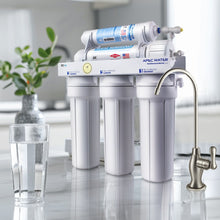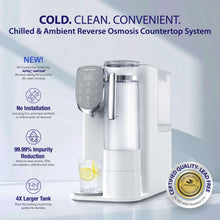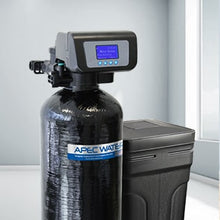WATER DISINFECTION METHODS. Part I
There are a number of ways of purifying water. In evaluating the methods of treatment available, the following points regarding water disinfectants should be considered.A disinfectant should: 1. ...
Forms of micro-organisms in drinking water, part IV
Define Fecal coliform bacteria: Fecal coliform bacteria, such as Escherichia coli (E. coli), grow in the intestines of human beings and other warm-blooded animals. Since they are discarged in astro...
FORMS OF MICRO-ORGANISMS IN DRINKING WATER, PART III
VIRUSES The smallest of the infectious microorganisms is that group of parasitic forms known as viruses. Too small to be seen under a microscope, viruses are capable of causing disease in both pla...
FORMS OF MICRO-ORGANISMS IN DRINKING WATER, PART II
WORMS Worms belong to the animal kingdom. There are three types of worms (flatworms, roundworms [nematodes], and rotifers) found in water. For the most part, they dwell in the bed of material at t...
Forms of lower-Life/Organisms in drinking water, part I
ALGAE These organisms are found throughout the world. Simple algaes exist in the Monera and Protista kingdoms. Other algae are plants. They constitute single-celled or simple multicellular photosyn...
Understanding the Color of Tap Water
What color is water?When artists paint bodies of water they generally color them blue or blue-green. While water does reflect blue-green light, noticeable in great depths, it should appear colorl...
What color is water? Ordinarily we think of water as being blue in color. When artists paint bodies of water they generally color them blue or blue-green. While water does reflect blue-green light,...
MULTI-MEDIA WATER FILTERS (Depth Filters)
Multi-media filters represent a significant improvement over single-media filters. This is due primarily to improved filter bed action based on the innovative use and selection of filter media. Mul...
MECHANICAL FILTRATION OF DRINKING WATER
Mechanical filtration will remove almost all forms of turbidity. Of course, the smaller the turbid particles, the finer must be the filter openings in order to strain them out. Under some circums...
Pick up a glass of water and hold it to the light. Can you see any finely divided, insoluble particles suspended in the water? Or does the water seem hazy? If so, the water is turbid.Turbidity. T...
PALATABILITY OF DRINKING WATER
We have discussed at some length now various types of pathogens and methods of destroying them in the process of making water potable -- safe to drink. This is highly important, but it is not the...
DISEASE-CAUSING ORGANISMS IN DRINKING WATER
TASTE, ODOR, AND TURBIDITY Regardless of any other factors, water piped into the home must be potable. To be potable it should be completely free of disease organisms. Water is the breeding ground...
WATER QUALITY OF SURFACE WATERS
Lakes, rivers, reservoirs, ponds, etc., are termed surface waters. They receive water directly from precipitation and surface run-off. These various bodies of water also receive a portion of thei...
Nitrate (nitrate nitrogen) in drinking water
Let’s get to know this Nitrate Nitrogen. The concentration of nitrates is commonly expressed as NO3-. The term "nitrate nitrogen" is used to refer to the nitrogen present which is combined in the n...
HYDROGEN SULFIDE IN DRINKING WATER
Hydrogen sulfide is a gas present in some waters. There is never any doubt as to when it is present due to its offensive "rotten egg" odor. This characteristic odor is sometimes apparent in conce...



